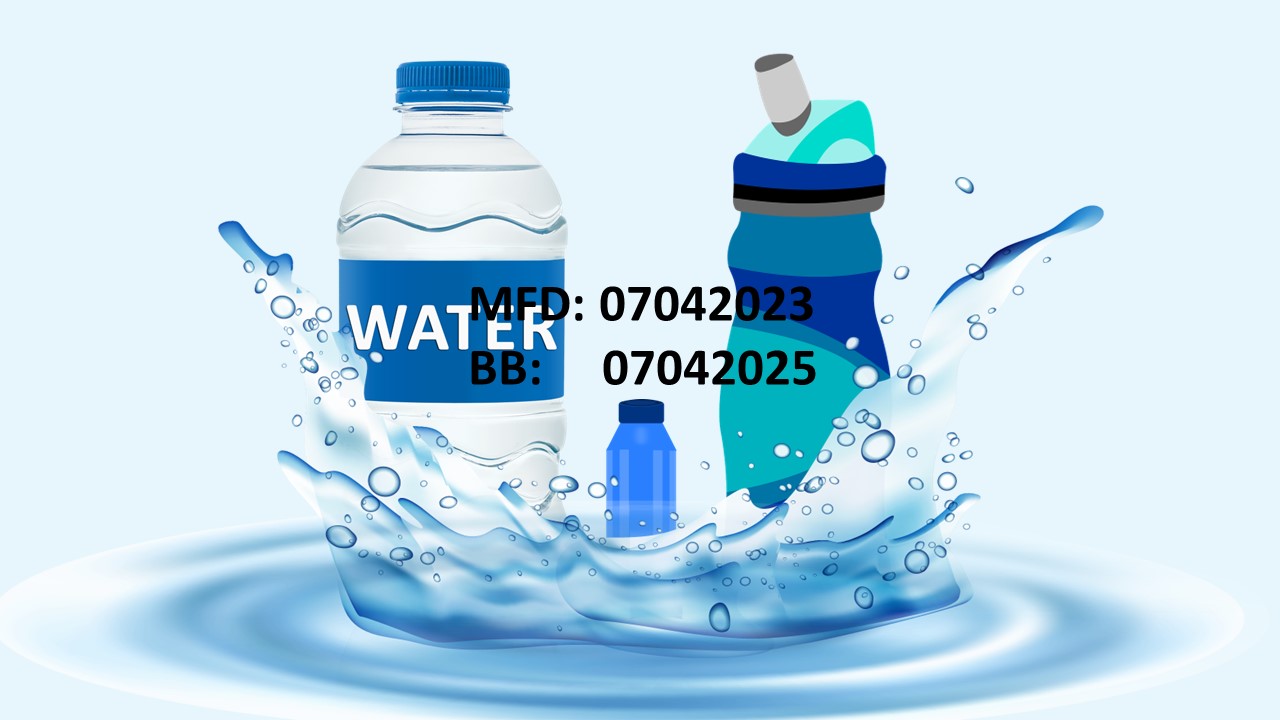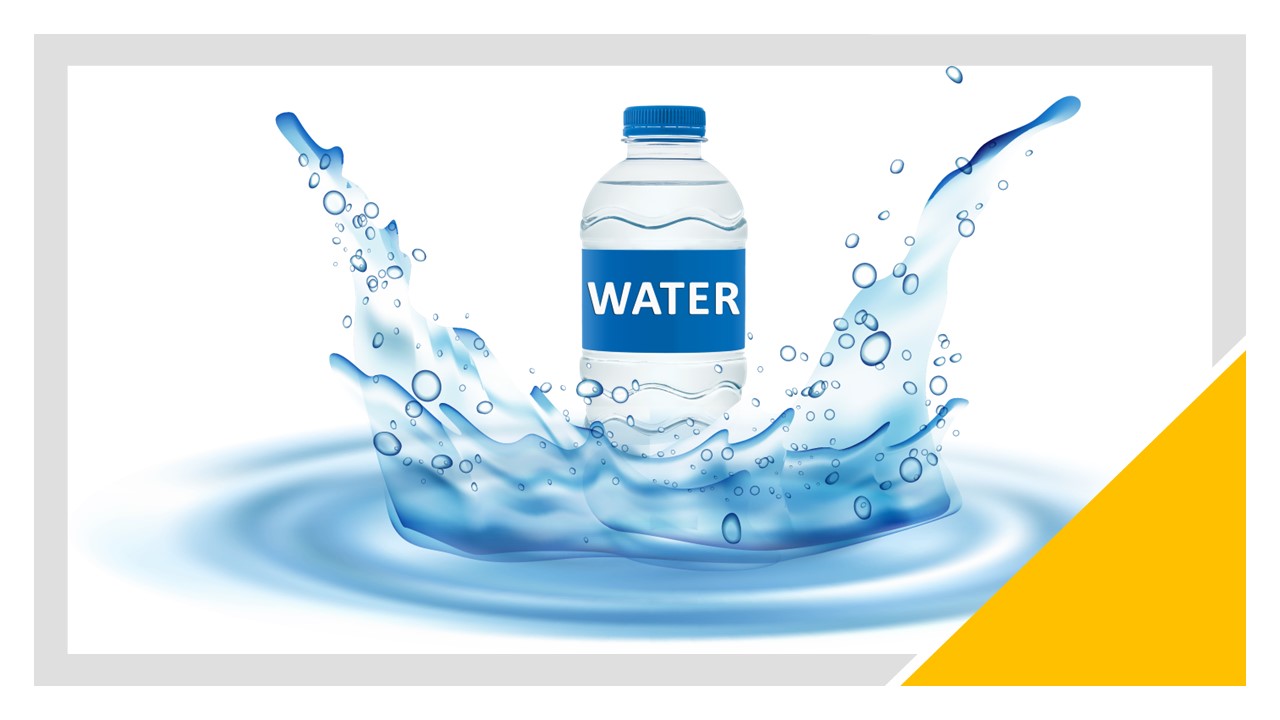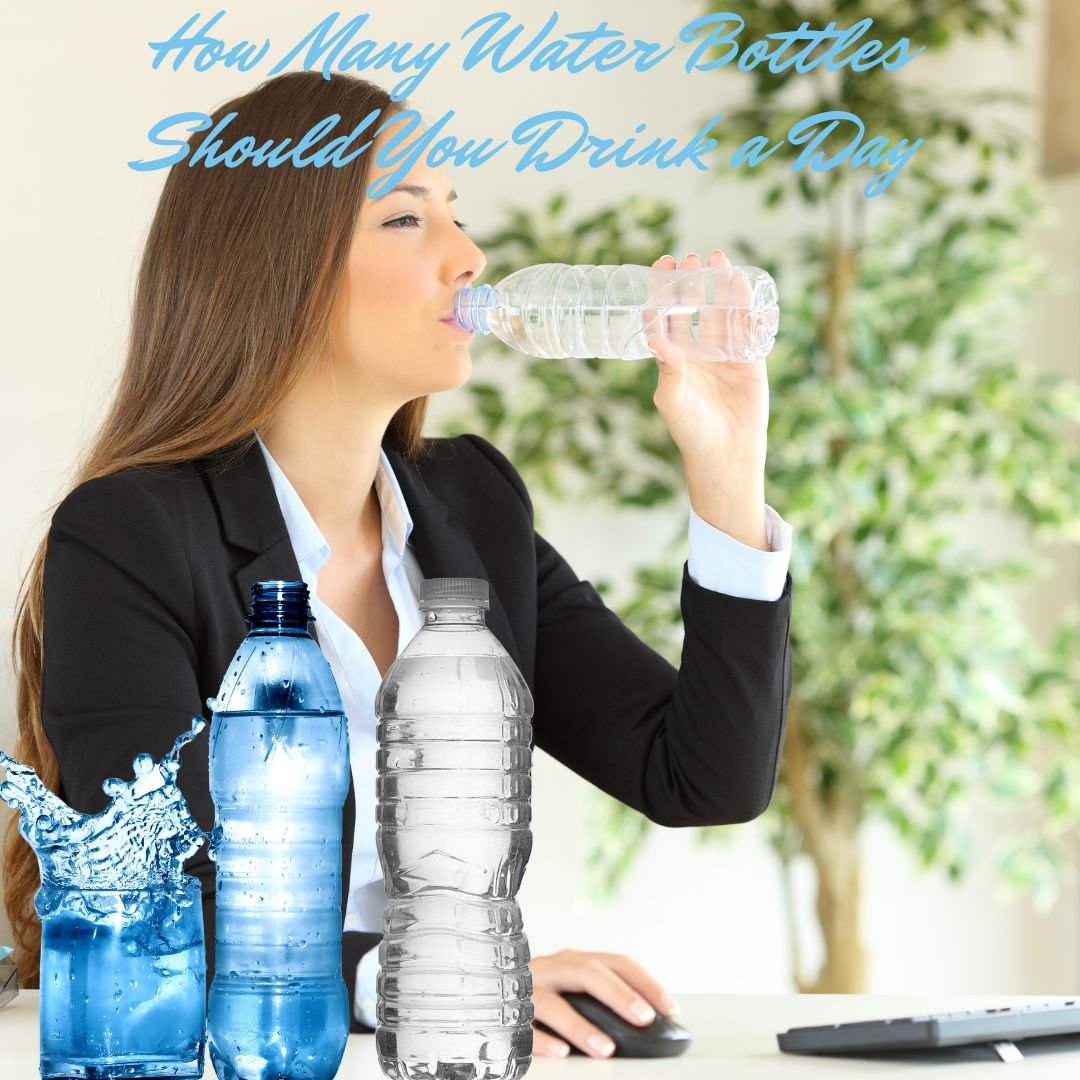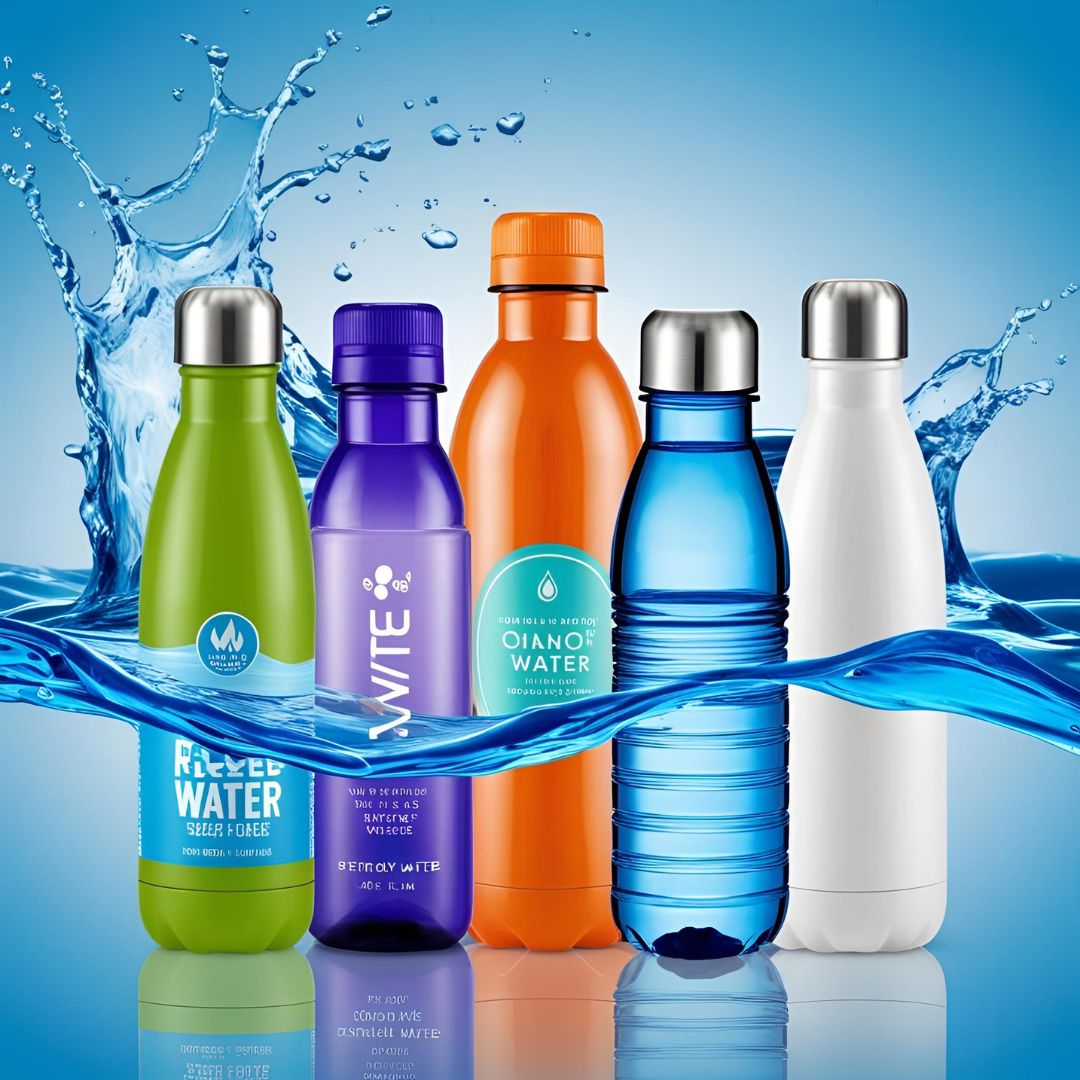Shelf Life Of Water Bottles – Everything You Need To Know
What is the shelf life of water bottles? Did you know that the average American drinks more than 182 gallons of bottled water each year? That’s a lot of plastic bottles that are used and discarded, but have you ever stopped to think about the shelf life of those bottles?
How long can you safely store water in a plastic bottle before it goes bad or becomes unsafe to drink? The shelf life of water bottles can vary depending on several factors, including the type of plastic used in the bottle, the quality of the water, and how the bottles are stored.
In this article, we’ll answer that burning question you have and provide you with helpful tips to make sure your bottled water stays fresh and safe for consumption. So, whether you’re preparing for an emergency or planning a camping trip, read on to discover the shelf life of water bottles and how to make the most of them.
What Is Shelf Life Of Water Bottles
In general, it’s recommended that you consume bottled water within 2 years of the bottling date. However, if the water has been stored properly and hasn’t been exposed to light or heat, it may still be safe to drink beyond that timeframe.
It’s important to note that plastic water bottles can leak chemicals into the water over time, especially if they are exposed to heat or sunlight. This can affect the taste and quality of the water and may also pose health risks.
To extend the shelf life of water bottles, it’s best to store them in a cool, dark place, away from direct sunlight and heat sources. Avoid storing them in hot cars or near windows. Additionally, be sure to check the expiration date on the bottle before consuming the water.
If you’re looking for an eco-friendlier and more sustainable alternative to plastic water bottles, consider using a reusable water bottle made from materials like stainless steel or glass. These options are more durable and can last for many years with proper care.
Different Types Of Plastic Used In Water Bottles
There are several types of plastic commonly used in water bottles, each with its own properties, manufacturing process, and potential risks to health and the environment:
1. Polyethylene Terephthalate (PET)
This is the most commonly used plastic in water bottles, known for its durability and resistance to impact. PET bottles are lightweight and easy to transport, making them popular for single-use purposes.
However, PET bottles can potentially leach chemicals such as phthalates and antimony into the water, especially if they are exposed to heat or sunlight.
2. High-Density Polyethylene (HDPE)
HDPE bottles are opaque and often used for milk, juice, and water. They are resistant to impact and have a low risk of chemical leaching, making them a popular choice for reusable water bottles.
3. Polypropylene (PP)
PP bottles are lightweight and have a high resistance to heat and chemicals. They are often used for sports and travel water bottles but can potentially leach chemicals such as BPA.
4. Polycarbonate (PC)
PC bottles are clear, durable, and often used as reusable water bottles. However, they can potentially leach bisphenol-A (BPA) into the water, which has been linked to health concerns such as hormone disruption.
It’s important to note that while plastic water bottles offer convenience, they can also pose risks to both human health and the environment. Plastic bottles can take hundreds of years to decompose and can release harmful chemicals into the environment during production and disposal.
To reduce these risks, it’s important to explore eco-friendly alternatives to plastic water bottles, such as stainless steel or glass, and to properly dispose of plastic bottles through recycling programs.
RELATED: How Long Do Water Bottles Last
Factors Affecting Water Bottle Shelf Life
There are several factors that can affect the shelf life of water in plastic bottles, including:
- Quality of the water: The quality of the water that is initially put into the bottle can have an impact on how long it will remain safe to drink.
- Type of plastic used: Different types of plastic have different properties that can affect the water stored inside them, such as the potential for chemical leaching.
- Exposure to light and heat: Water bottles that are exposed to direct sunlight or high temperatures can cause chemical reactions that can negatively impact the quality of the water.
- Age of the bottle: Over time, the plastic in a water bottle can break down and degrade, potentially causing chemical leaching and other issues.
- Storage conditions: Proper storage conditions, such as keeping the bottle in a cool, dark place and avoiding contact with other chemicals or contaminants, can help to extend the shelf life of the water.
It’s important to keep these factors in mind when storing water in plastic bottles to ensure that it remains safe to drink for as long as possible.
Shelf Life Of Different Types Of Water
The shelf life of water stored in plastic bottles can vary depending on the source and treatment of the water. Here is a breakdown of how long different types of water can be stored safely:
1. Tap Water
Tap water can typically be stored safely in a plastic bottle for 6 months to 1 year. However, the taste and quality of the water may deteriorate over time due to the presence of chlorine and other additives used in the treatment process. It’s best to use tap water within a few weeks for optimal taste and quality.
2. Filtered Water
Water that has been filtered using a water filter pitcher or other filtration systems can be stored safely in a plastic bottle for a few days to 6 months.
However, it’s important to keep in mind that filtration systems may not remove all contaminants from the water, so it’s best to use filtered water within a few days for optimal safety and taste.
3. Purified Water
Purified water, which has been treated to remove all impurities and contaminants, can typically be stored safely in a plastic bottle for 6 months to 1 year. However, as with tap water, the taste and quality of the water may deteriorate over time due to exposure to light and heat.
4. Mineral Water
Mineral water, which is sourced from natural springs and contains minerals and trace elements, can be stored safely in a plastic bottle for up to 2 years.
The minerals in the water can help to preserve its freshness and taste over a longer period of time. The only concern is the possibility of the release of chemicals from the bottle into the water.
It’s important to note that these are general guidelines, and the shelf life of water can be affected by a variety of factors, including the type of plastic used in the bottle and the conditions in which it is stored.
To ensure the best possible shelf life for your bottled water, it’s best to store it in a cool, dark place away from direct sunlight and heat sources, and to check the expiration date on the bottle before consuming the water.
RELATED: Water Bottles Sizes
Best Practices For Storing Water
Proper storage is key to extending the shelf life of water in plastic bottles. Here are some best practices for storing water:
- Keep it in a cool, dark place: Heat and sunlight can promote the growth of bacteria and cause the plastic to break down more quickly, which can affect the taste and safety of the water. To keep your water fresh, store it in a cool, dark place, such as a pantry or closet.
- Avoid direct sunlight: Exposure to sunlight can also cause plastic bottles to leach chemicals into the water, which can affect the taste and safety of the water. To avoid this, store your water in a place that is shaded or away from windows.
- Use airtight containers: Airtight containers can help to prevent bacteria and other contaminants from getting into your water. Make sure the cap is screwed on tightly and avoid opening the bottle unnecessarily.
- Don’t store it near chemicals: Avoid storing water near chemicals, such as cleaning products or pesticides, which can leach into the water and make it unsafe to drink.
- Rotate your stock: If you’re storing large quantities of water, it’s important to rotate your stock to ensure that you’re using the oldest bottles first. This will help to ensure that the water you’re drinking is as fresh and safe as possible.
- Consider using glass containers: If you’re concerned about the potential risks of plastic bottles, consider using glass containers to store your water. Glass is non-toxic and won’t leach chemicals into the water, but it can be more fragile and difficult to transport.
Signs Of Expired Water
It’s important to be able to recognize the signs that bottled water has expired or become unsafe to drink. Here are some of the key indicators to look out for:
Changes In Color
If the water has a cloudy appearance or has changed color, this could be a sign that bacteria or other contaminants have started to grow in the bottle. Water should be clear and transparent, so if you notice any discoloration, it’s best to err on the side of caution and discard the water.
1. Changes In Taste Or Smell
If the water has an off or unpleasant taste or smell, this could be a sign that it has gone bad. Fresh water should be odorless and have a neutral taste. If the water tastes or smells strange, it’s best to avoid drinking it.
2. Presence Of Mold Or Bacteria
If you notice any visible mold or bacteria growth in the water or on the inside of the bottle, this is a clear sign that the water is no longer safe to drink. Mold and bacteria can cause a range of health problems, so it’s important to discard the water immediately.
3. Expired Date
Water bottles come with an expiration date, which is typically printed on the bottle. If the water has passed its expiration date, it’s best to discard it even if it looks and smells fine. The quality of water deteriorates over time, and there may be bacteria growth that is not visible.
If you notice any of these signs, it’s important to discard the water immediately and not drink it.
Drinking expired or contaminated water can lead to a range of health problems, including diarrhea, nausea, and vomiting. By being aware of the signs of expired water and taking proper precautions, you can help to ensure that you and your family stay healthy and safe.
Alternatives To Plastic Water Bottles
If you’re concerned about the environmental and health risks associated with plastic water bottles, there are several alternatives that you can consider. Here are some of the most popular alternatives to plastic water bottles:
1. Stainless Steel
Stainless steel water bottles are durable, reusable, and easy to clean. They are also free from the chemicals found in plastic, making them a safer alternative. Stainless steel bottles are great for long-term storage and can keep your water cold or hot for extended periods of time.
2. Glass
Glass water bottles are another eco-friendly option. They are non-toxic, recyclable, and won’t leach chemicals into your water.
Glass bottles are also easy to clean and won’t absorb any flavors or odors from your water. However, glass bottles are more fragile than plastic or stainless steel, so they may not be the best option for outdoor activities or travel.
3. Reusable Containers
Another option is to use reusable containers, such as those made from silicone or other materials. These containers are typically lightweight, flexible, and easy to clean. They are also more eco-friendly than plastic bottles, as they can be used again and again.
4. Ceramic
Ceramic water bottles are another option that is free from chemicals and easy to clean. They can keep your water cool and have a unique and stylish look. However, they are also more fragile than other options and can be heavier.
RELATED: IRON FLASK Sports Water Bottle Review
Does Water Expire In Glass Bottles
Water itself does not expire or go bad, but it can become contaminated if stored in a glass bottle for too long or if the bottle is not cleaned properly.
Glass bottles are a safer and more eco-friendly alternative to plastic bottles as they are non-toxic and do not leach chemicals into the water.
However, if the water is exposed to sunlight or heat, it can encourage the growth of bacteria and algae in the glass bottle, which can make the water unsafe to drink.
While water stored in a glass bottle may not have an expiration date like bottled water, it’s important to use your best judgment and discard the water if it looks or smells strange, or if you suspect that it may have become contaminated.
Bottled Water With The Longest Shelf Life
One brand that is known for having a longer shelf life is Blue Can Water, which uses aluminum cans instead of plastic bottles to store the water. The company claims that its water can remain safe to drink for up to 50 years if stored properly, due to the airtight seal provided by the aluminum can.
While the shelf life of bottled water can vary depending on the brand, the type of plastic used, and the storage conditions, some brands claim to have a longer shelf life than others.
For example, some manufacturers produce bottled water that is treated with a UV sterilization process, which can extend the shelf life of the water.
Additionally, some brands use a higher quality bottle that is less permeable, which can help to prevent the water from absorbing chemicals or flavors from the bottle over time.
Overall, the shelf life of bottled water can vary depending on several factors, and it’s important to check the “best by” date and store the water properly to ensure that it remains safe to drink.
How To Know Expiry Date Of Plastic Bottles
The expiry or “best by” date of a plastic bottle is typically printed on the label or the bottom of the bottle. The date is usually in the form of a month and a year, such as “06/2024,” which indicates that the bottle should be consumed by June 2024.
It’s important to note that the expiry date on a plastic bottle is not necessarily an indication of when the water will go bad or become unsafe to drink, but rather a recommendation from the manufacturer for when the water will be at its optimal quality and taste.
In many cases, water can remain safe to drink for long periods of time beyond the expiry date if stored properly.
If you are unsure of the expiry date of a plastic bottle, or if the date has worn off or is no longer legible, it’s best to err on the side of caution and assume that the water may no longer be at its optimal quality. In this case, it’s best to discard the water and purchase a fresh bottle.
How Long Does It Take For Water To Expire
Water does not expire or go bad in the same way that food can spoil, but it can become contaminated over time and therefore unsafe to drink. The shelf life of water can vary depending on several factors, such as the quality of the water, the type of container it is stored in, and the storage conditions.
In general, if water is stored properly in a clean, airtight container in a cool, dark place, it can remain safe to drink for a long period of time, often for several years.
However, if the water is exposed to heat, light, or air, it can encourage the growth of bacteria, mold, or algae, which can make the water unsafe to drink. In addition, if the container is made of low-quality plastic, it can leach chemicals into the water over time, which can also be harmful.
The Bottom Line
Proper storage and handling are crucial in extending the shelf life of water in plastic bottles. While plastic bottles can offer convenience and portability, it’s important to be mindful of the potential health and environmental risks they pose.
By following best practices for storing water and exploring eco-friendly alternatives to plastic bottles, you can ensure that you have access to safe, clean drinking water for yourself and future generations.



